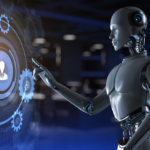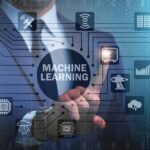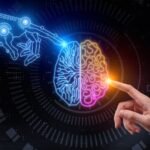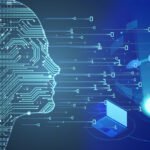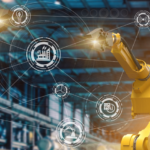AI and Cybersecurity: How AI is enhancing cybersecurity defenses against cyber threats.
The ever-evolving landscape of cyberspace poses formidable challenges for organizations and individuals alike. With the rise in sophisticated cyber threats, traditional security measures alone are no longer sufficient to protect sensitive data and digital assets. However, amidst this rapidly evolving threat landscape, Artificial Intelligence (AI) has emerged as a powerful ally for bolstering cybersecurity defenses. This blog explores how AI is revolutionizing the cybersecurity domain, detecting and mitigating cyber threats proactively, and fortifying our digital world against malicious actors.
AI in Cybersecurity: The Game-Changer
- Threat Detection and Prevention:
AI-powered cybersecurity solutions excel in identifying and analyzing complex patterns of malicious activities across vast amounts of data. Machine learning algorithms can learn from historical attack data and continually improve their ability to detect new and emerging threats. They can recognize anomalies, behavioral changes, and known attack patterns, even in real-time, allowing security teams to respond swiftly and proactively.
- Advanced Malware Detection:
Malware has become increasingly sophisticated and evasive, making it challenging for traditional signature-based antivirus software to keep up. AI, however, employs heuristic-based approaches and behavioral analysis to identify unknown malware and zero-day threats. This proactive stance enables organizations to mitigate the risks posed by new and previously undetected malware strains.
- Predictive Cyber Defense:
AI-powered predictive analysis helps cybersecurity teams anticipate potential vulnerabilities and attacks. By analyzing historical data and security logs, AI can predict likely attack scenarios, allowing organizations to fortify their defenses in advance. This capability is invaluable in staying one step ahead of cybercriminals.
- Automating Incident Response:
Incident response is a critical aspect of cybersecurity, and AI streamlines this process by automating repetitive tasks. AI-driven systems can assess the severity of incidents, contain threats, and even initiate recovery procedures autonomously. By reducing response times, AI enhances an organization’s ability to mitigate damages and minimize downtime during cyber incidents.
- User Behavior Analytics:
AI can monitor and analyze user behavior patterns, identifying suspicious activities and potential insider threats. This helps prevent data breaches caused by compromised credentials or insider attacks, which can be challenging to detect through conventional means.
- Cybersecurity in IoT:
As the Internet of Things (IoT) ecosystem grows, the attack surface for cybercriminals widens. AI can play a vital role in securing IoT devices by monitoring network traffic, detecting anomalous behavior, and securing communication channels within the IoT network.
Benefits of AI in Cybersecurity
- Enhanced Detection and Response: AI-driven cybersecurity solutions significantly improve detection rates and response times, minimizing the impact of cyberattacks.
- Reduced False Positives: By distinguishing between legitimate activities and malicious behaviors accurately, AI helps decrease the number of false positive alerts, allowing security teams to focus on real threats.
- Scalability and Speed: AI can handle vast amounts of data and operate at unprecedented speeds, making it ideal for safeguarding networks with increasing traffic and complex infrastructures.
- Cost-Effectiveness: Automating mundane tasks through AI-driven cybersecurity solutions reduces the burden on human analysts and optimizes resource allocation, leading to cost savings.
- Continuous Learning: AI continuously learns from new data, staying up-to-date with the latest attack techniques and improving its ability to counter emerging threats.
Challenges and Future Prospects
Despite its immense potential, AI in cybersecurity faces certain challenges. Adversarial AI, where cybercriminals use AI to craft more sophisticated attacks, poses a significant concern. Ensuring data privacy and maintaining the ethical use of AI in cybersecurity also requires careful consideration.
Looking ahead, AI will continue to play a pivotal role in the fight against cyber threats. Further developments in AI algorithms, including explainable AI, will enhance transparency and enable human analysts to understand how AI arrives at its decisions. Collaboration between cybersecurity experts and AI researchers will be crucial to stay ahead of adversaries and create a more secure digital ecosystem.










